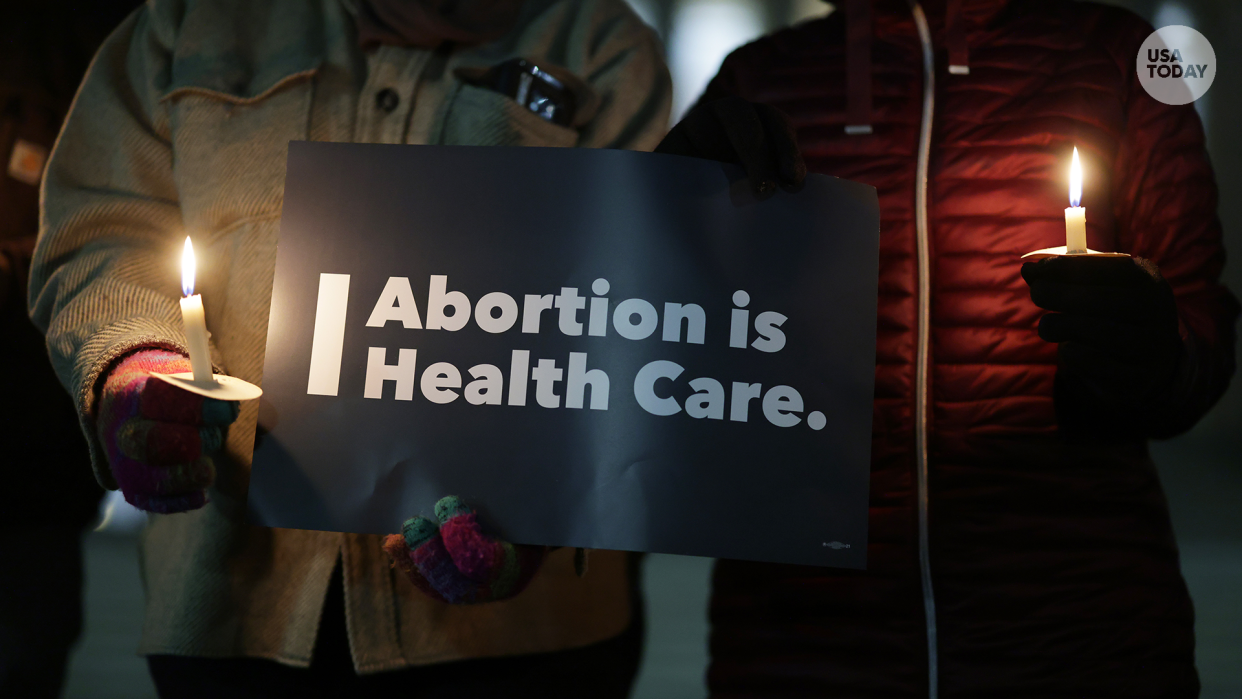If abortion is banned in Ohio, seekers would have to drive 157 to 269 miles| Opinion

Abortion is legal in Ohio, yet legislators continue to chip away at abortion access in the state.
The entire country is awaiting the U.S. Supreme Court decision in Dobbs v. Jackson Women’s Health Organization — a case that could ultimately overturn Roe v. Wade.
More: Letter: Abortion can be a compassionate choice, Farmers can help fight climate change
However, the weight of this decision hits differently in Ohio, where legislators are considering several bills, two “trigger ban” laws (Senate Bill 123 and House Bill 598) and one law that would allow private citizens to sue individuals aiding abortions (House Bill 480).
Abortion trigger bans are state laws that immediately ban abortion within that state upon Roe v. Wade being overturned.
Anti-abortion policies such as these contradict the opinions of reproductive aged women in Ohio who, according to research by the Ohio Policy Evaluation Network, support abortion.
Opinion: Overturning Roe v Wade would take away equal protection for women
The Ohio Policy Evaluation Network also examined how anti-abortion legislation would affect Ohioans seeking abortion care should the U.S. Supreme Court overturn Roe v. Wade, with research published in Perspectives on Sexual and Reproductive Health.

If abortion is banned in Ohio, Ohioans would have to travel to a different state to obtain care. But most of Ohio’s bordering states also have restrictive abortion policies: Indiana, Kentucky, and West Virginia will likely ban abortion, and it is unclear if Michigan and Pennsylvania will ban abortion if Roe falls.
In the best-case scenario, Ohioans would have to travel at least as far as Michigan or Pennsylvania to obtain abortion care — an average driving distance of 157 miles to the nearest facility (the current average is 26 miles).
In the worst-case scenario, where abortion is banned in Michigan and Pennsylvania, Ohioans would have to travel at minimum to Illinois, Maryland, or Virginia to obtain abortion care — an average driving distance of 269 miles to the nearest facility.
More: What's the future of abortion access in Ohio if Roe v. Wade is overturned?
Increased travel results in other damaging consequences; driving costs could triple for those seeking abortion care.
An Ohioan furthest from an abortion facility before enactment of an abortion ban would incur transportation costs of approximately $58, according to the 2022 federal travel reimbursement rate of $0.585/mile.
This one-way trip would increase up to $163 for the maximum distance in the best-case scenario and $198 in the worst-case scenario. These estimates do not include the potential added costs of tolls, parking, or hotel stays near the facility.

Banning abortion in Ohio would disproportionately burden those who already face significant barriers in accessing healthcare — people of color, people experiencing poverty, and those living in rural areas.
More: With U.S. Supreme Court decision looming, abortion access in Ohio is on the ballot
Anti-abortion legislation harms reproductive health and increases costs to Ohioans. Our policymakers should be aware that their restrictive abortion policies are inconsistent with the opinions of most Ohio reproductive-aged women who believe that safe, effective, and affordable methods of abortion care should be available in their community.
If Ohio policymakers want to promote the health and well-being of their constituents, they will not ban abortion care in Ohio and instead will turn their efforts to expanding access to reproductive healthcare.
Payal Chakraborty is a Ph.D. candidate in epidemiology at The Ohio State University. Danielle Bessett is an associate professor of sociology at the University of Cincinnati. Both are investigators with the Ohio Policy Evaluation Network.
This article originally appeared on The Columbus Dispatch: Opinion: Abortion ban would unfairly impact poor and people of color

